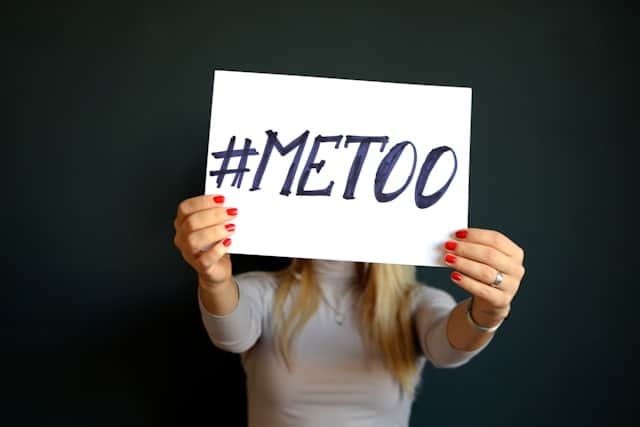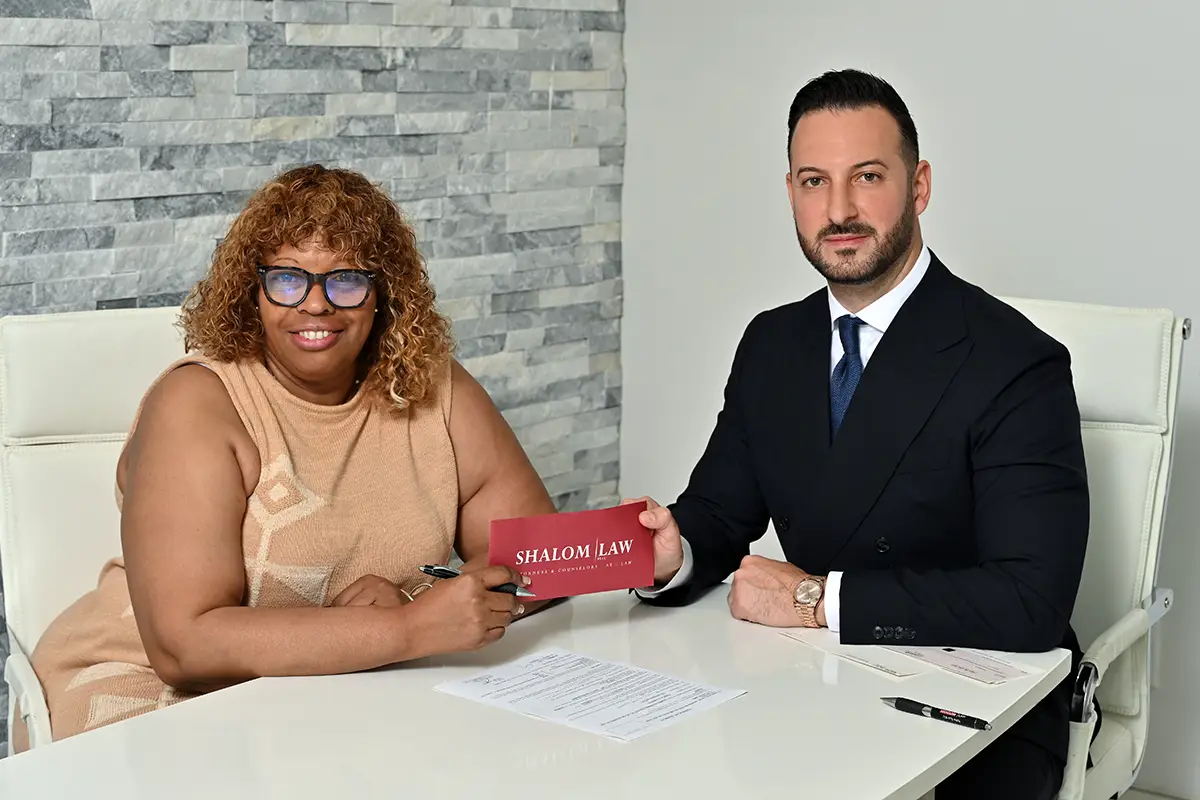Photo by Mihai Surdu on Unsplash
Although Sexual Harassment in the workplace has been illegal nationwide since the passage of § 701 or Title VII of the Civil Rights Act of 1964 (“Title VII”),1 Sexual Harassment is still prevalent in the majority of workplaces in 2020. Multiple workplace harassment studies conducted over the last year have shown that anywhere between 25% and 85% of all working women and 20-35% of all working men have experienced some form of Sexual Harassment while at work this past year.2
Sexual Harassment in the workplace can take many different forms, including inappropriate touching, unwanted sexual advances, requests for sexual favors, crude sexual remarks, or any other unwelcome sexual behavior a co-worker or supervisor may subject you to at work. If you have experienced one or more of the aforementioned behaviors, you should contact an experienced Employment Attorney immediately, as there are applicable time limits one may have to pursue legal action.
Unwelcome Sexual Comments or Behaviors in the Workplace = Sexual Harassment
There are two main cause of action that can arise from Sexual Harassment in the workplace—a “Quid Pro Quo scheme of Sexual Harassment, and a “Hostile Work Environment.”
Quid Pro Quo Sexual Harassment
Quid Pro Quo Sexual harassment in the workplace usually comes about in cases where a supervisor is pressuring a subordinate worker to agree to the supervisor’s sexual demands to prevent the supervisor from taking some adverse action against the worker. In cases where an individual may demonstrate that she did, in fact, endure quid pro quo harassment, the employer she was employed under will be held “strictly liable” for the sexually explicit conduct of their agents and employees, because this kind of harassment not only involves an illegal exchange of sexual favors in the workplace, but it also entails an egregious misuse of the power-dynamics of a workplace.
A Hostile Work Environment
The second cause of action that Sexual Harassment in the workplace can lead to is a hostile work environment which arises typically when Sexual Harassment in the workplace, by a coworker, supervisor, or even a nonemployee, is so severe and pervasive that it creates an uncomfortable, hostile, intimidating environment for the victim. It is worth noting that, as of 2018, the “severe or pervasive” element has been eliminated as a requirement for proving sexual harassment hostile work environment claims under both the New York State Human Rights Laws (NYSHRL) and the New York City Human Rights Law (NYCHRL). However, if your claim is brought in federal court, under Title VII- this standard still applies.
The Employer’s Defenses
There are many different ‘general defenses’ to Sexual Harassment that an employer might try to raise in both quid pro quo or hostile work environment cases of Sexual Harassment. However, the two most common defenses employers raise in sexual harassment cases tend to be:
(i) The Harassment “Didn’t Happen.”
– An employer may attempt to affirmatively claim the Sexual Harassment never really occurred. Hence why it is crucial to document any harassment you begin to experience in your workplace – even if it seems like it might just be a one-off occurrence. Courts have Phone: (718) 971-9474| Fax: (718) 865-0943| Email: [email protected] Office: 105-13 Metropolitan Avenue, Forest Hills, New York 11375 found that even one incident of sexually harassing behavior in the workplace can give rise to a sexual harassment claim.3
– Recordings or screenshots of inappropriate comments made can help negate this defense, as can testimony from witnesses who heard or saw the inappropriate conduct happening.
(ii) The conduct was “Welcomed” or “Consented To”
– On the other hand, even when there is evidence showing inappropriate behavior by an employer’s agents or employees, an employer may instead try to claim that the sexual behavior was ‘welcomed’ by the Plaintiff.
– However, it is important to note that federal courts have repeatedly stated that a prior consensual relationship between two workers does not mean that one “could never become victim to … sexual harassment by that [employee] subsequent to the termination of the relationship.”4 Because ruling otherwise could allow employees free reign on sexually harassing those they have been intimate with, the law of the land is that there is “no per se bar against hostile work environment claims based on gender that arise, whether entirely or not, out of a failed consensual relationship.5
– To succeed on a Title VII claim against a coworker who you were consensually sexual with for any amount of time, you will need to simply show evidence that (1) the consensual sexual relationship was terminated, and (2) thereafter severe and/or pervasive harassment of a sexual nature continued over a substantial period of time.6
Making Your Case
No matter where you file suit, or which cause of action you decide to allege, the bottom line for Sexual Harassment cases is that you are going to need proof to substantiate your side of the story. Because Sexual Harassment is likely to occur behind close doors, if you do not actively take steps to record and document the harassment you’re going through, your case could come down to a he-said, she-said battle in court of you versus your employer. Here at Shalom Law, PLLC, we always recommend our clients document everything, from the second the harassment starts. You may document the harassment in a number of ways, whether that may be journaling about your experiences as they happen, saving inappropriate emails, screenshotting sexual text messages, or whatever else, just be sure to keep as paper trail. And secondly, make sure you clearly state and inform your harasser and your coworkers how you are feeling about the inappropriate conduct. Sexual Harassment in the workplace is uncomfortable, unnecessary, and intimidating, and it can take a massive toll on your mental, emotional, and even physical health.
You’re Not Alone. Shalom Law, PLLC is Here to Help.
If you are being Sexually Harassed at your place of employment, you need to speak to an Experienced Employment Law Attorney immediately. The attorneys and staff at Shalom Law, PLLC have extensive experience protecting the rights of Sexual Harassment victims and litigating their cases before New York State and federal courts. Call Shalom Law today for a consultation: (718) 917-9474.
This memorandum relates to general information only and does not constitute legal advice. Facts and circumstances vary. We make no undertaking to advise recipients of any legal changes or developments.
SHALOM LAW, PLLC.
105-13 Metropolitan Avenue
New York 11375
(718) 971-9474
www.shalomlawny.com
1 42 U.S.C. 2000e, et seq. (1964)
2 See Branka Vuleta, Sexual Harassment in the Workplace Statistics—What You Need to Know, WHAT TO BECOME (Sept. 25, 2020)
3 See Howley v. Town of Stratford, 217 F.3d 141, 154 (2d Cir.2000) (finding that a single incident of obscene comments by a coworker created a hostile work environment where the comments were made “at length, loudly, and in a large group in which [plaintiff] was the only female and many of the men were her subordinates”).
4 Pipkins v. City of Temple Terrace, 267 F.3d 1197, 1201 (11th Cir. 2001); see also Kahota v. Town of Hempstead, 994 F.Supp.2d 305, 328 (E.D.N.Y. 2014); Sclafani v. PC Richard & Son, 668 F.Supp.2d 423, 433 (E.D.N.Y 2009); Perks v. Town of Huntington, 251 F.Supp.2d 1143, 1157 (S.D.N.Y.2003)
5 See Kahota, 994 F.Supp.2d at 382 (internal citations omitted(; see also Lashley v. New Life Business Inst., Inc., 2015 WL 1014128 (E.D.N.Y. Mar. 9, 2015).
6 See Sclafani, 668 F.Supp.2d at 433-34.







